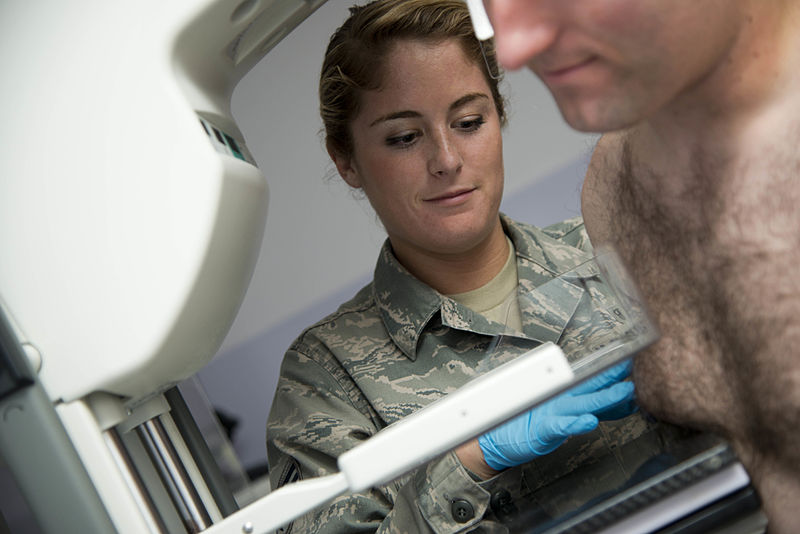What is breast cancer in men?
A breast cancer is a malignant tumor that starts from cells of the breast. Even though men don’t have breasts like women, they do have a small amount of breast tissue. The “breasts” of an adult man are similar to the breasts of a girl before puberty. In girls, this tissue grows and develops, but in men, it doesn’t.
But because it is still breast tissue, men can get breast cancer. Men get the same types of breast cancers that women do, but chances are rare.
How common is breast cancer in men?
Breast cancer in men can affect patients at any age. It can be managed by reducing your risk factors. Please discuss with your doctor for further information.
What are the symptoms of breast cancer in men?
The main symptom of breast cancer in men is a hard lump in one of your breasts. The lump is almost always painless. The lump is usually located underneath the nipple and areola (the circle of dark-coloured skin surrounding the nipple).
However, the vast majority of breast lumps are caused by a condition called gynaecomastia. This is a common non-cancerous condition where male breast tissue becomes enlarged.
Less common symptoms of male breast cancer include:
- The nipple beginning to turn in on itself (nipple retraction)
- The nipple becoming hard and inflamed, and looking sore (nipple ulceration)
- Fuid leaking from the nipple (nipple discharge)
Additional symptoms usually only develop if the cancer spreads from the breast to other parts of the body, such as the bones, liver or lungs. This is known as metastatic breast cancer. Symptoms of metastatic breast cancer include:
- Bone pain
- Swelling of the lymph nodes (glands), usually in or around the armpit
- Shortness of breath
- Feeling unusually tired all the time
- Feeling sick (nausea)
- Itchy skin with yellowing of the skin and whites of the eyes (jaundice)
There may be some symptoms not listed above. If you have any concerns about a symptom, please consult your doctor.
When should I see my doctor?
If you have any signs or symptoms listed above or have any questions, please consult with your doctor. Everyone’s body acts differently. It is always best to discuss with your doctor what is best for your situation.
What causes breast cancer in men?
It’s not clear exactly what causes breast cancer in men, although a number of things can increase your risk of developing the condition. You can refer to the list of risk factors for this disease.
What increases my risk for breast cancer in men?
It is rare for a man under age 35 to get breast cancer. The chance of a man getting breast cancer goes up with age. Most breast cancers happen to men between ages 60 and 70. Other risk factors of male breast cancer include:
- Breast cancer in a close female relative
- History of radiation exposure of the chest
- Enlargement of breasts (called gynecomastia) from drug or hormone treatments, or even some infections and poisons
- Taking estrogen
- A rare genetic condition called Klinefelter’s syndrome
- Severe liver disease (called cirrhosis)
- Diseases of the testicles such as mumps orchitis, a testicular injury, or an undescended testicle
Diagnosis & Treatment
The information provided is not a substitute for any medical advice. ALWAYS consult with your doctor for more information.
How is breast cancer in men diagnosed?
If you have symptoms of breast cancer, such as a hard, painless lump in one of your breasts, your doctor will carefully examine you. During the examination, they’ll also look for other possible signs of male breast cancer, such as swollen lymph nodes (glands). It’s likely your doctor will refer you for further tests if there’s a possibility you may have breast cancer. These tests are described below:
- Mammogram: A mammogram is a type of X-ray used to help determine whether there are any changes in breast tissue that could be the result of cancer. During the mammogram procedure, a radiographer (a specialist in taking X-rays) will compress one of your breasts between two X-ray plates. This shouldn’t be painful, but you should tell the radiographer if you find it uncomfortable. Once your breast has been correctly positioned, an X-ray will be taken that produces a clear image of the inside of your breast. The procedure will then be carried out on your other breast.
- Ultrasound: An ultrasound scan uses high-frequency sound waves to produce an image of the inside of your breasts. An ultrasound probe or sensor will be placed over your breasts to create an image of the inside of your breasts on a screen. The image will highlight any lumps or abnormalities that may be present in your breasts.
- Biopsy: A biopsy may be recommended if a mammogram or ultrasound scan highlight any lumps or abnormalities in your breasts. A biopsy is a test that can either confirm or rule out a diagnosis of breast cancer in men. It involves taking a sample of suspected cancerous tissue and examining it in a laboratory for the presence of cancerous cells.
How is breast cancer in men treated?
The same treatments that are used in treating breast cancer in women — surgery, radiation, chemotherapy, biological therapy, and hormone therapy — are also used to treat breast cancer in men. The one major difference is that men with breast cancer respond much better to hormone therapy than women do. About 90% of male breast cancers have hormone receptors, meaning that hormone therapy can work in most men to treat the cancer.
What are some lifestyle changes or home remedies that can help me manage breast cancer in men?
The following lifestyles and home remedies might help you cope with breast cancer in men:
- Making healthier choices: Try to eat better or get more exercise, cut down on the alcohol, or give up tobacco, keep your stress level under control.
- Eating better: Eating right can be hard for anyone, but it can get even tougher during and after cancer treatment. Treatment may change your sense of taste. Nausea can be a problem. You may not feel like eating and lose weight when you don’t want to. Or you may have gained weight that you can’t seem to lose. You may find it helps to eat small portions every 2 to 3 hours until you feel better. You may also want to ask your cancer team about seeing a dietitian, an expert in nutrition who can give you ideas on how to deal with these treatment side effects.
- Rest, fatigue, and exercise: Extreme tiredness, called fatigue, is very common in people treated for cancer. This is not a normal tiredness, but a “bone-weary” exhaustion that doesn’t get better with rest. For some people, fatigue lasts a long time after treatment, and can make it hard for them to exercise and do other things they want to do. But exercise can help reduce fatigue. If you were sick and not very active during treatment, it is normal for your fitness, endurance, and muscle strength to decline. Any plan for physical activity should fit your own situation. Talk with your health care team before starting anything. Get their opinion about your exercise plans. Then, try to find an exercise buddy so you’re not doing it alone. Involving family or friends when starting a new exercise program can give you that extra boost of support to keep you going when the push just isn’t there.
If you have any questions, please consult with your doctor to better understand the best solution for you.
Source: Article contributed by hellodoktor.com
Read also: Managing The Emotional Burden of Breast Cancer Treatment









